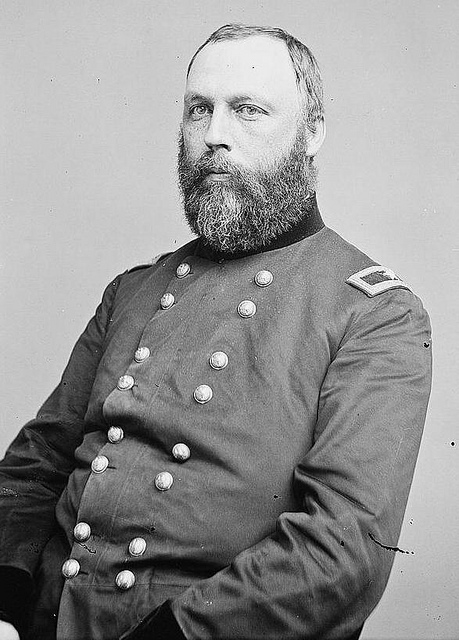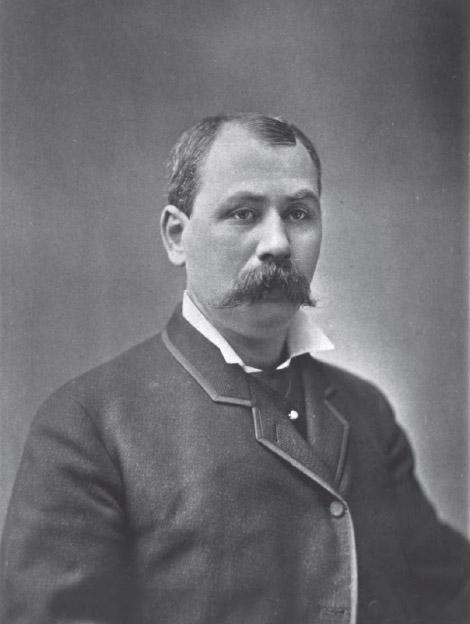Early American Commentators on the Ripper Case
Jack the Ripper, Uncategorized, Victorian Period, Whitechapel Murders Add comments|
Although the crimes of Jack the Ripper occurred in the East End of London, they caused such a sensation when they were reported in newspapers worldwide that there were a number of non-British-based commentators on the murders. Some American medical men and police officials expressed their opinions on the case to U.S. newspapers.
Dr. Howard Atwood Kelly
Dr. Howard Atwood Kelly (1858–1943), pioneer obstetrician and gynecologist and one of the “Four Doctors” in a portrait by John Singer Sargent of the founding physicians of Johns Hopkins Hospital, wrote to the Medical News in a letter published in the issue of 13 October 1888. Kelly, at the time of the murders, an Associate Professor of Obstetrics at the University of Pennsylvania, put the murders down to sexual perversion. Dr. Kelly wrote:
After giving a list of examples of sexual perversities throughout history, Dr. Kelly wrote:
“A desire to murder without any apparent motive, a desire which practises its cruelties invariably upon women, and that of a certain class; added to this the mutilation of the genitals of the corpse, and, in at least on instance, the peculiar practice of slitting open the belly and drawing out the entrails.”
Dr. Kelly went on to give the following piece of advice to the investigators:
“It would be of importance to search the corpses, when freshly found, for evidence of violation of this kind, although such is not necessary to establish the truth of the supposition. Sexual perverts of this character never begin by the commission of crimes of such frightful atrocity, but yielding to impulses to do slight injury to their victims, find, as time goes on, that it is necessary to practise greater and greater cruelties, to arouse their desires and gratify passion, until a stage like the present is reached. Such has with probability been the history of the present murderer.” Although a number of modern observers of the Ripper crimes, notably Colin Wilson, have also attributed a sexual motive to the murders, it is also true that the doctors who worked on the case found no evidence of “connection”—that is, of semen in or on the bodies of the Ripper victims.
Dr. William A. Hammond as U.S. Surgeon General.
Another American commentator on the crimes was the New York “alienist” Dr. William A. Hammond (1828–1900), a former Civil War U.S. Surgeon General. In an article that appeared in the Atlanta Constitution on 5 October 1888, datelined the day before from New York City, we are told that “Dr. William A. Hammond, the insanity expert of this city, says the Whitechapel murders are committed by a homicidal maniac who is like a tiger in his nature.”
Rather than go for the sexual motive that Dr. Kelly thought was behind the murders, Hammond thought that insanity was the reason for the murders. He believed that the London police were making a mistake in “looking for a repulsive, uncouth butcher, dripping with blood and hiding in the cellars about Whitechapel.”
Hammond’s ideas were also reported in the Bismarck Daily Tribune of North Dakota, of 11 October 1888, where we learn that Hammond believed that “the probabilities are many to one that the perpetrator is a decorous and soft spoken gentleman, living an apparently virtuous life, a man whose closest acquaintances do not suspect [him] of crime.” In the same issue of the Bismarck newspaper, Chief Inspector Thomas A. Byrnes of the New York City detective force said he agreed with the opinions of Dr. Hammond. He insisted that the New York police could have caught the man by using the women as decoys.
Chief Inspector Thomas A. Byrnes of the New York City Police.
Byrnes went on to stay: “We have no such autocratic powers as the London police, but if a crime is so plainly localised in one particular district, as in the case of these London murders, we would most assuredly arrest the perpetrator in short order.” Elsewhere Byrnes is said to have boasted that if someone committed such murders in New York, his men would have him “in the jug in 36 hours.” Byrnes was decidedly more reticent to criticize his British counterparts in an interview published in the Boston Daily Globe on 13 November 1888:
This seems to be rather a turnaround by the opinionated Irish-born New York detective. And perhaps he was right to be cautious to criticize for when he had his very own “Ripper” crime on the night of 23–24 April 1891 with the murder and mutilation of Carrie Brown aka “Old Shakespeare” in a hotel room in the seaport section of Brooklyn, the case proved to be not easy to solve. Although a man named Ameer Bin Ali, a French-speaking Algerian known as “Frenchy”, ultimately was tried and convicted of the murder and mutilation of Carrie Brown, the trial was later shown to be a sham. After Ameer Bin Ali was released in 1902 after eleven years in Sing Sing, crusading journalists including Jacob Riis and Charles Edward Russell convinced Governor Benjamin Odell that the blood evidence used in the suspect’s trial had been tampered with kamagra uk mastercard. The governor officially declared Ameer Ben Ali to be “innocent of the Carrie Brown murder.” The murder remains unsolved and various Ripper suspects, including George Chapman aka Severin Klosowski, who lived for a time in New Jersey, and Dr. Francis Tumblety, who ran his herb doctor business out of an office in Brooklyn, have been proposed as Brown’s killer. References “Carrie Brown: Jack the Ripper in America—Part 2” on Murder by Gaslight Blog http://murderbygasslight.blogspot.com/2010/05/carrie-brown-jack-ripper-in-america.html Christopher T. George, “A Man of Large Opinions: Dr William A. Hammond and Jack the Ripper,” Ripperologist No. 48, August 2003, pp 23–25. William A. Hammond, “Madness and Murder,” North American Review, Vol 147, December 1888, pp 626–38. An extract from Dr. Hammond’s “Murder and Madness” is available at http://www.casebook.org/victorian_london/murdermadness.html “Philadelphia Gynecologist’s Oct. 13, 1888 Letter To Medical News” on Casebook: Jack the Ripper message boards at http://forum.casebook.org/showthread.php?p=111411
“Howard A. Kelly, Assoc. Prof. Obst., Univ. of Penna., Correspondence. The Whitechapel Murders. The Medical News, October 13, 1888” in Casebook Press Reports section at http://www.casebook.org/press_reports/medical_news/mednews881013.html |



September 23rd, 2011 at 3:38 pm
Good post, spotted you on google and content I clicked. Keep up the awesome job!
July 24th, 2015 at 1:38 am
Greetings I am so excited I found your site, I really found you by accident, while I was researching on Bing for something else, Anyways I am here now and would just like to say cheers for a incredible post and a all round thrilling blog (I also love the theme/design), I don’t have time to read through it all at the moment but I have bookmarked it and also added your RSS feeds, so when I have time I will be back to read much more, Please do keep up the fantastic work.